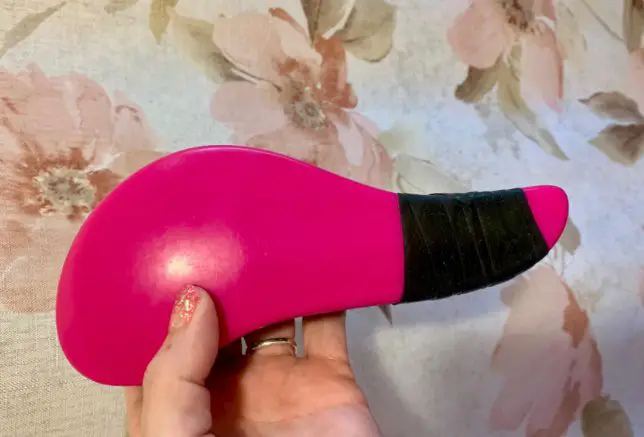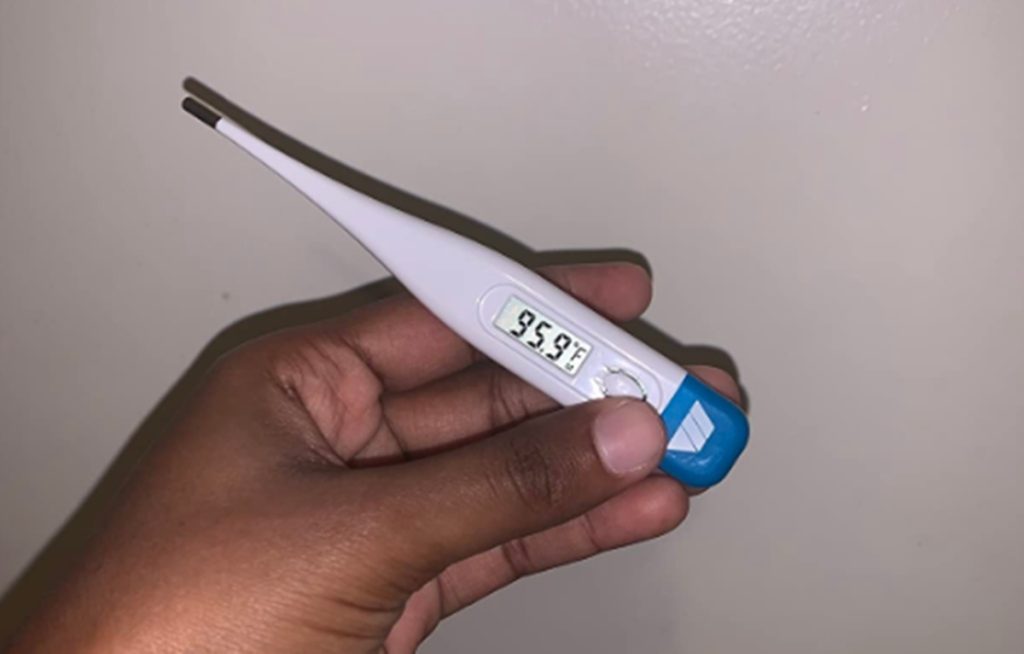Dogs love to chew on things, and that can often lead to them eating items they shouldn’t. If your dog ate silicone rubber, what should you do?
In this blog post, we will discuss the dangers of silicone rubber ingestion and what you can do to help your dog.
- Key Takeaway
- What To Do If Your Dog Ate Silicone Rubber?
- Signs That Your Dog Has Intestinal Blockage
- Is Silicone Toxic To Dogs?
- What If My Dog Ate Silica Gel?
- Is Food-Grade Silicone Safe For Dogs?
- Can Dogs Poop Out Silicone?
- Can Dogs Pass Rubber Toys?
- How Long Does It Take For a Dog To Pass Something?
- What Can I Give My Dog To Help Him Pass Something He Ate?
- FAQs
- Conclusion and final thoughts
Key Takeaway
- If your dog ate silicone rubber, you should monitor for signs of distress like vomiting, diarrhea, loss of appetite, or abdominal pain, add bulk to their diet to help pass the material, but if symptoms persist or if the dog shows signs of choking or extreme discomfort, seek immediate veterinary care.
- Silicone is not toxic to dogs, but ingesting large amounts can lead to an upset stomach or potentially cause an intestinal blockage.
- Signs that your dog has an intestinal blockage include symptoms such as vomiting, loss of appetite, lethargy, diarrhea, and difficulty or inability to defecate.
Handling a Situation When Your Dog Eats Silicone Rubber

Dogs will always try and eat some items that are not edible, let alone safe for them. One of these items is silicon rubber. While silicone rubber is not toxic for dogs, ingestion of a large amount could result in an upset stomach.
There is also a chance that the silicon rubber could cause a blockage within the gut. So, what should you do if your dog ate silicone rubber?
1. Find out how much silicone rubber your dog ate

The first thing you should do if your dog ate silicone rubber is to determine the quantity. Dogs like chewing on silicone rubber and they may or may not ingest some of it.
To find out how much silicone rubber is missing carefully inspect it and see how much has been eaten. Also, look around the dog and see if there is any silicone rubber on the ground.
What I like to do when these things happen is to open my dog’s mouth. Sometimes, the foreign object could be stuck on its teeth or maybe on the back of the mouth. You can easily intervene and remove anything from their mouth that shouldn’t be there.
2. Take your dog’s temperature

When a dog eats a foreign subject, in this case, a silicon rubber, it may result in an increased body temperature. A normal dog’s temperature is between 101 and 102. If your dog’s temperature is above 103, it may have a fever.
There are a few different ways that you can take your dog’s temperature. The most common way is to use a rectal thermometer. This type of thermometer is inserted into the rectum, which is why it is important to use lubricant on the tip.
You will also want to make sure that you do not insert the thermometer too far, as this could cause discomfort for your dog. Once the thermometer is in place, leave it there for about 60 seconds before removing it and checking the reading.
Another way to take your dog’s temperature is to use an ear thermometer. This type of thermometer goes into the ear canal and only needs to be inserted about halfway in order to get an accurate reading.
Again, you will want to use lubricant on the tip of the thermometer before inserting it. Once the thermometer is in place, leave it there for about 60 seconds before removing it and checking the reading.
3. Induce vomiting

If you find out that your dog has eaten a larger amount of silicone rubber, inducing vomiting is probably the best thing to do. It is best if they throw up the silicone rubber instead of waiting and not knowing whether they will pass it or not.
There are a few ways to do this, but the most common is to use a syringe. Fill the syringe with water and then insert it into the dog’s mouth. Apply gentle pressure to the plunger and wait for the dog to throw up.
Another method is to give the dog a tablespoon of hydrogen peroxide. This will usually cause the dog to vomit within 15 minutes. If neither of these methods work, you can try feeding the dog something that will make them sick, such as spoiled food or table scraps.
Finally, if all else fails, you can always take your dog to the vet and have them induce vomiting professionally.
4. Observe their behavior

When dogs eat a large amount of something that doesn’t agree with them, in this case, a silicon rubber, they will start to throw up. Throwing up can be both good and bad. After a dog ingests a foreign object, it will make itself throw up.
If your dog is able to vomit the silicon rubber in two or three tries, that is alright. However, if your dog continues to vomit about seven or eight times that day and again the next day, it is definitely a cause for concern.
If your dog is lethargic, not eating, or vomiting, these could be signs that the silicon rubber has caused a gastrointestinal upset. I would also recommend checking their stool. A dog should be able to pass the silicone rubber in about four to six hours after ingesting it.
But, if you notice blood or something that doesn’t look like their regular stool, it’s important to take your dog to the vet for an evaluation.
5. Visit the veterinarian

If your dog ate silicon rubber and is acting weird and looks like it is in pain, it is time for a veterinarian visit. Ingesting silicone can cause an obstruction in the intestines, and if not treated quickly, it can be fatal. If you think your dog has ingested silicone, call your veterinarian immediately.
They will likely recommend bringing your dog in for an x-ray to confirm the ingestion and determine the best course of treatment. Treatment may include surgery to remove the obstruction, so it’s important to act quickly if you think your dog has ingested silicone.
Signs That Your Dog Has Intestinal Blockage
Signs that your dog has an intestinal blockage include symptoms such as vomiting, loss of appetite, weakness, nausea, diarrhea, and difficulty or inability to defecate.
Vomiting
One of the most common symptoms of an intestinal blockage in dogs is vomiting. This occurs as the dog’s body attempts to expel the obstruction. The vomit may contain food, bile, or even fecal matter if the blockage is severe.
Loss of Appetite
A dog with an intestinal blockage may lose interest in food due to discomfort or nausea. This can lead to weight loss over time if not addressed promptly.
Weakness
The discomfort caused by the blockage, combined with a lack of nutrition from not eating, can make your dog appear weak or lethargic. They might be less active than usual or show signs of fatigue.
Nausea
Just like humans, dogs can feel nauseous when they have a blockage in their intestines. This can cause them to drool excessively, lick their lips, or swallow repeatedly.
Diarrhea
Diarrhea can occur if the blockage is partial, allowing some liquid feces to pass around it. The stools may be loose and watery, and in some cases, they may contain blood.
Straining or Inability to Defecate
If your dog is straining to defecate or unable to poop at all, this could be a sign of an intestinal blockage. This symptom often indicates a complete blockage that needs immediate veterinary attention.
Is Silicone Toxic To Dogs?
Silicone is not toxic to dogs because it is made of natural materials and does not contain any harmful chemicals. Silicone is also very durable and resistant to high temperatures, so it is safe for use around pets. There are a few things that could happen.
The silicone could pass through the dog without causing any problems. However, it’s also possible that the silicone will cause an obstruction in the digestive tract.
If this happens, surgery may be necessary to remove the silicone. In some cases, the dog may also experience vomiting or diarrhea if they ingest silicone.
Silicone is a synthetic material that has many uses, including in cookware, medical devices, and even some dog toys. It’s made of silicon, oxygen, and other elements, and it’s considered to be very stable and inert. This means that it doesn’t react with other substances and isn’t easily broken down by the body.
However, some people believe that silicone could leach chemicals into food or water, which could then be ingested by your dog. There is no evidence to support this claim, but it’s something to be aware of.
If you’re concerned about silicone toxicity, there are some alternative materials you can use for your dog’s toys, such as natural rubber or cotton. You can also talk to your veterinarian about any concerns you have.
At the end of the day, it’s up to you whether or not you want to use silicone products with your dog. If you do decide to use them, just be sure to supervise your pet and inspect their toys regularly for signs of wear and tear.
What If My Dog Ate Silica Gel?
If your dog ate silica gel, it’s generally not toxic and most dogs will pass the contents of a packet without any further symptoms, but ingestion can potentially cause an obstruction, particularly in small dogs or if consumed in large quantities.
Silica gel is a desiccant, used commonly in packaging to absorb moisture and keep products dry.
While the silica gel itself isn’t toxic to dogs, there are still potential risks associated with ingestion. Small dogs, or dogs that have eaten a large amount of silica gel, may be at risk of an obstruction in the gastrointestinal tract.
The beads do not enlarge in the stomach, but if a substantial quantity is consumed, they could accumulate and cause blockage. Furthermore, the exterior packaging, if swallowed, could also contribute to a potential blockage.
Is Food-Grade Silicone Safe For Dogs?
Yes, food-grade silicone is safe for dogs as it is non-toxic, free from harmful chemicals, and is often used in pet products like toys and food bowls.
Food-grade silicone is a popular material used in the pet industry due to its safety profile. It’s non-toxic, doesn’t have a chemical smell, and is safe and healthy for pets.
This makes it an excellent choice for various pet products, including chew toys and feeding mats. Food-grade silicone is also highly heat-resistant, which means it can safely be used with hot foods or liquids.
Moreover, some pet products, such as lick pads and food can covers, are made with 100% BPA-Free food-grade silicone, further ensuring their safety.
Can Dogs Poop Out Silicone?
Yes, dogs can poop out silicone. However, it is not common for them to do so. If your dog does poop out silicone, it is likely because they have eaten something that contains silicone. In most cases, there is no need to be concerned about this.
If your dog has ingested silicone, the best thing you can do is monitor them and contact your veterinarian if they show any signs of illness.
If your dog does not have any medical problems and is able to pass the silicone on its own, you can help by providing a high-fiber diet and plenty of water. You should also avoid giving your dog any products that contain oil or grease, as these can make the situation worse.
If your dog ingests silicone, it’s important to monitor its stool for any changes. If you see any blood or black tarry stools, contact your veterinarian immediately.
Otherwise, you should expect your dog to pass the silicone within 24-48 hours. Keep an eye on your dog during this time and make sure they stay hydrated.
Can Dogs Pass Rubber Toys?

No, dogs cannot pass rubber toys. The reason is that the material is too dense for them to digest properly. If a dog were to try and eat a rubber toy, it could easily choke on it or suffer from blockages in its digestive system. So, it’s best to avoid giving your furry friend any rubber toys to play with!
The biggest concern is if the toy was coated in anything toxic like lead paint. If you’re unsure, call your vet or the ASPCA’s 24-hour animal poison control hotline at (888) 426-4435. They will be able to help you determine if there is cause for concern and what steps you should take next.
In most cases, however, your dog will probably just have a stomach ache and may vomit up the toy or pass it in their stool. Keep an eye on them and give them plenty of water to stay hydrated. If they seem to be in pain or are having trouble passing the toy, call your veterinarian.
If you can, try to determine what size and type of toy your dog ate. This will help your vet know if there is a risk for obstruction or perforation. If it’s a small rubber squeaky toy, they will likely just pass it without any issue. However, if it’s a larger rubber toy or one with a lot of small parts, it may cause an obstruction.
How Long Does It Take For a Dog To Pass Something?
In general, it takes approximately 10 to 24 hours for a dog to pass something it has swallowed, depending on the size and health of the dog as well as the nature of the item.
Once a dog swallows an object, it enters the stomach where digestive enzymes start to break it down.
If the object is small and not harmful, it may travel through the intestines and be passed out in the dog’s stool within a day.
However, larger or more dangerous items might not be digested and could become lodged in the stomach or intestines, potentially causing a blockage.
This is why it’s crucial to monitor your pet closely if you suspect they’ve swallowed something inappropriate, and seek veterinary attention if they display any signs of distress, such as vomiting, loss of appetite, lethargy, or difficulty defecating says Pet Health Network.
What Can I Give My Dog To Help Him Pass Something He Ate?
You can give your dog a small amount of canned pumpkin to help him pass something he ate, as the fiber in it can aid in digestion and help move the object through the digestive tract.
Canned pumpkin is rich in dietary fiber that can help regulate your dog’s digestive system and potentially assist in moving an ingested item through more smoothly.
However, it’s important to only use plain canned pumpkin and not pumpkin pie mix, which contains spices and sugars that could be harmful to your pet.
You’d typically add one to four tablespoons of pumpkin to your dog’s regular food, depending on their size.
FAQs
Q: What happens if a dog eats rubber?
A: When a dog ingests rubber, it may either pass through their digestive tract or cause an obstruction. Small pieces of rubber may be able to pass without causing any harm, while larger pieces can get stuck in the esophagus, intestine, or cause a blockage. If you suspect your dog has swallowed rubber, it is best to contact your veterinarian for guidance.
Q: Should I take my dog to the vet if they ate a rubber band?
A: Yes, it is recommended to take your dog to the veterinarian if they have consumed a rubber band. The vet will be able to evaluate the situation and determine the best course of action. They may recommend inducing vomiting or performing an x-ray to check for any potential blockages.
Q: How dangerous is it if a dog ate a piece of rubber?
A: The danger of a dog ingesting a piece of rubber depends on the size and type of rubber ingested. Small pieces may pass through the digestive system without causing harm, but larger pieces can pose a risk of obstruction or blockage. It is crucial to consult with your veterinarian for proper guidance.
Q: What should I do if my dog swallows something that could cause an obstruction?
A: If your dog has swallowed something that could potentially cause an obstruction, it is important to seek veterinary care immediately. The vet may recommend inducing vomiting if it is safe to do so or perform an x-ray to assess the situation. They may also guide you through monitoring your dog for signs of distress or discomfort.
Q: How can I prevent my dog from eating rubber toys?
A: To prevent your dog from eating rubber toys, it is important to supervise their playtime and intervene if they start chewing on or ingesting the toy. Opt for toys made from safe materials and avoid leaving them unsupervised with items that could be easily ingested. Regularly check and replace damaged or worn-out toys to minimize the risk.
Conclusion and final thoughts
When it comes to pet safety, prevention is key. If you suspect that your dog has eaten silicone rubber, don’t hesitate to take them to the vet right away for a thorough examination.
Even if the material isn’t toxic, it could still cause an obstruction in the GI tract which would require treatment.
In any case, monitor your pet closely and keep them away from any potentially hazardous materials.
By taking these precautionary steps, you can help ensure the health and safety of your beloved four-legged companion.




